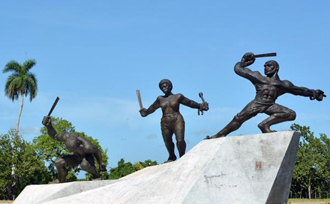Several slave revolts were triggered in the 1800s especially in the Caribbean where slavery had taken a huge rise despite abolitionist effort to end it. Sugar and cotton plantation owners flourished during the time and needed as much cheap labour as they could get in order to increase production which would then have a positive effect on their income.
As enslaved Africans began to build a stronger community and sense of ownership, they started to rebel and fight their masters. Although several of the revolts ended with leaders being killed, the revolts shook the white
In the history of slave revolts, several of them are linked to brave men or male leaders who risked their lives for others while women were celebrated more as activists and pioneers of several movements. H
In 1843, Carlota rose among few other enslaved Africans working on the Triunvirato sugar plantation and surrounding plantations in Matanzas, Cuba. After months of secret planning with her other counterparts, Firmina – also a woman, Filipe Lucumi, Eduardo, Narciso and Manuel Ganga of the Acana plantation set out to strike on November 5, 1843. They led a rebellion against the mayor and Julian Luis Alfonso Sole, owner of the sugar mill and his assistants setting several houses on fire including the house where slaves were often kept and punished.

Triumvirato sugar plantation, Cuba .Carlota in the middle built on July 25 1991.
According to the book West African Warfare in Bahia and Cuba: Soldier Slaves in the Atlantic World by Manuel Barcia Paz, the rebel leader had their own weapons and used leather as both a weapon and protection from spears and stray bullets.

The November 1843 revolt successfully spread through more than 5 plantations where slaves, following in the shadow of Carlota and her partners, seized their own freedom and killed as many white enslavers as possible.
An article on IBW21 explains that Carlota is said to have celebrated her successful attack on María de Regla, an overseer’s daughter whom she struck down with a machete.

Carlota was killed and her body found on the morning of November 6, 1943, by her loyal followers on the Triunvirato estate who then went into an uproar and killed as many whites as they could. Oral
Although the revolt was not successful in the long term, it played a significant role in the history of Cuba as it was the largest and last rebellion that caused major fear in the white society in the 19th century eventually leading to the 1868 Cuban independence movement. According to IBW21, it shaped the course of Cuban history — and Fidel Castro’s ideology of the oppressed rising up to defeat their oppressor.
Celebrated for her role in leading a revolt, Carlota is a Yoruba born woman who was kidnapped from the Kingdom of Benin where she was born and raised till about the age of 10.
She is called Carlota Lucumi mainly for belonging to the Lucumi ethnic group which was and still is made up of Afro-Brazilians of Yoruba descent. During the days of slavery, the Lucumi ethnic group was greatly feared in Cuba and were similar to the Maroons. They led several revolts and often established their own settlements.










